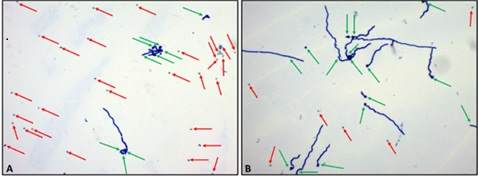Four ways to test effectivity of biologicals in seed treatment
Biologicals are living organisms and a good survival rate when used in a slurry for seed treatment is crucial for success. In this article Carlos Oliveira Silva looks at four recommended ways of testing this and discusses correct analysis of the test results to help you make informed decisions.
When it comes to precision application and sustainability, seed treatment is an invaluable technique for applying biological products. The conditions under which the products are applied can be controlled, which is very important for the success of the biological active in the seed treatment. Applying the biological directly to the seed in a seed treatment ensures that the active ingredient is located only in the area where it is needed. The biological or pesticide stays close to the plant roots, protecting the seedlings and enabling the biological to, for example, increase the plant’s resistance to abiotic stress and/or improving yield. But biologicals are living organisms and a key factor to success is compatibility between the biological and the slurry components.
Four testing methods for biologicals
1. Inhibition Zone Method (Kirby-Bauer Test)
It is a quick and easy way of testing how different components of seed treatment slurry affect microorganisms. It is widely used in labs because of its simplicity and it is a valuable test when you want to quickly find out which slurry components can be used with biological products. The drawback is that it does not confirm whether the component kills or just stops the growth of the microorganism and it only shows visual results.

Fig 1: an example of Kirby-Bauer method result evaluating the effects of different component on Bacillus sp. in Muller-Hinton-Agar (MHA) media. A is the control sample (only sterilized water), B shows a mild negative effect, and C shows a severe negative effect.
2. Colony-Forming Unit (CFU) Method
This well-known method estimates the number of living cells (bacteria or fungi) in a sample to determine the concentration of microorganism and their capacity to produce colonies (or to colonize) in a specific environmental condition. It's easy to work with and gives results in a few hours and is widely used to check the shelf-life of biological products during the process of registering them. However, as colonies can come from one or more grouped cells, the results are mere estimates. Viable cells that agglomerate can be miscounted as a single colony, which can lead to inaccurate data on the number of viable cells (which is one reason that the results are expressed in CFU/mL (or grams) instead cells/mL (or grams)).

Fig 2: In this image we see the compatibility and incompatibility of different slurry colonies of Trichoderma asperellum after three days of incubation in potato-dextrose-agar media at 25℃.
3. Conidia Germination Method (Direct Viability Method)
This method is specifically for fungi spores (conidia). Compared to the Kirby-Bauer and the CFU methods, this test gives more accurate information about the number of viable conidia in a sample. It can also determine whether the conidia are germinated or non-viable as well as activated but not germinated (viable conidia but not germinated due, for example, to a short period of incubation). Precise information can be collected about how the components affect fungi survival, on their own or in a formulation or seed treatment slurry. Results are available in a few hours, and it can evaluate long-term effects of different components. In some cases, it can determine whether the component will kill or stop the growth of conidia over time.
One of the disadvantages of this method is the time taken, mainly during the evaluations, which require the use of an optical microscope with an embedded high-definition camera. It also requires precise environmental control during the incubation period as any deviation in temperature at this stage can drastically influence the results.

Figure 3. Results obtained using the conidia germination method for Trichoderma asperellum after 15 hours at 25C in potato-dextrose-agar.
4. Croda’s new PrecisionBio™ Method
The more data you have, the easier it is to make decisions about which slurry is best when a biological is included
When evaluating the viability of conidia in seed treatment slurries, it is important to look not only at the germination capacity, but also the conidia vigor (the aspects that affect its effectivity as an active). This method is complementary to the conidia germination method. Some products can specifically affect this vigor and have an impact on the fungi’s performance when it is applied. To evaluate this, Incotec, and parent company Croda, have developed PrecisionBio™. This is a new software that processes the same optical microscope images used in the conidia germination method and evaluates conidia vigor over time. This generates new information about the effects of the slurry on conidia in a convenient way. With more information about conidia behaviour, you are better able to make confident decisions about which slurry to use with your biological active, saving time during studies.
.jpg?h=498&w=800&la=en-gb&hash=009FA00EB4BD0AF31266CCEBF099EA5E)
As an example, the area under the curve of conidia vigor was calculated using data from the PrecisionBio software. Each column labelled with a different letter is statistically different according to Dunnett testing with α = 0,05.
Gathering as much information as possible about how slurry components affect the survival of biological products is important. The more data you have, the easier it is to make decisions about which slurry is best when a biological is included. This is crucial because there are no standard values for the concentration of biological products in seed treatment. Always use all the available information about the biological product you plan to use. Incotec has a lot of expertise in these matters and we are happy to help. For more information, contact us.